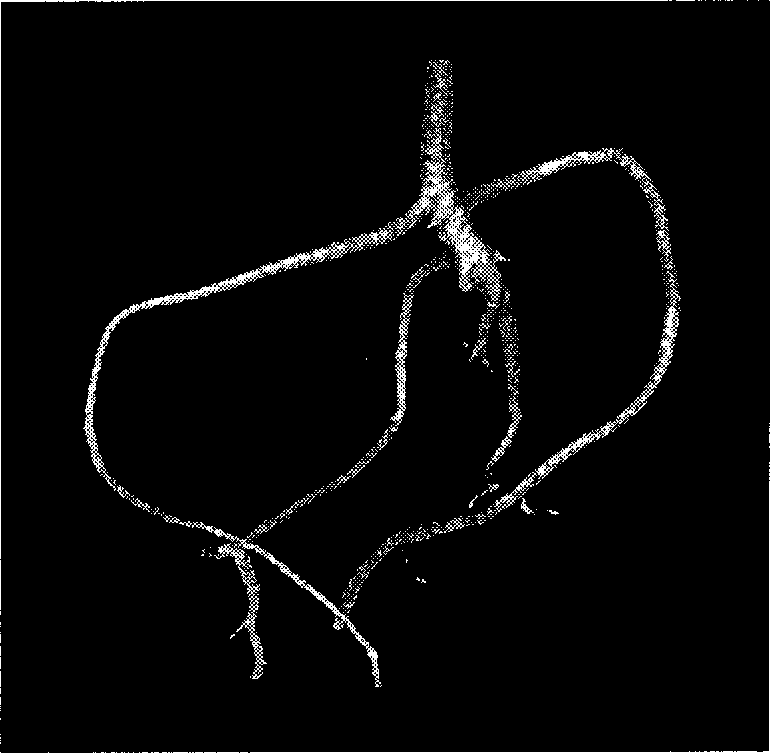In-situ measuring method of plant root system geometry
A plant root system and in-situ measurement technology, which is applied in the field of in-situ and non-destructive measurement of the geometric configuration of plant roots, can solve problems such as limited application, loss of precision, and staggered occlusion between roots, and achieve the effect of eliminating manual excavation
- Summary
- Abstract
- Description
- Claims
- Application Information
AI Technical Summary
Problems solved by technology
Method used
Image
Examples
Embodiment 1
[0033] see figure 1 . The in-situ measuring method of plant root geometric configuration of the present invention specifically comprises the following steps:
[0034] Take banyan saplings as an example.
[0035] (1) Select potted root samples, plant them for more than 1 week, and carry out proper packaging treatment to ensure that the scanning process is safe, clean and accurate;
[0036] (2) Carry out preparatory experiments and determine the scanning scheme. According to the specific equipment and root sample characteristics, select the scanning parameters. Such as MSCT tube voltage, tube current, pitch and layer thickness and other technical parameters.
[0037] (3) Scan the root sample, put the root sample vertically into the scanning surface bed, fix and calibrate the position, go through the pre-scanning space range, scan according to the selected scanning parameters, obtain the in-situ tomographic sequence image, and store the image The sequence is stored in the su...
PUM
 Login to View More
Login to View More Abstract
Description
Claims
Application Information
 Login to View More
Login to View More - R&D
- Intellectual Property
- Life Sciences
- Materials
- Tech Scout
- Unparalleled Data Quality
- Higher Quality Content
- 60% Fewer Hallucinations
Browse by: Latest US Patents, China's latest patents, Technical Efficacy Thesaurus, Application Domain, Technology Topic, Popular Technical Reports.
© 2025 PatSnap. All rights reserved.Legal|Privacy policy|Modern Slavery Act Transparency Statement|Sitemap|About US| Contact US: help@patsnap.com



